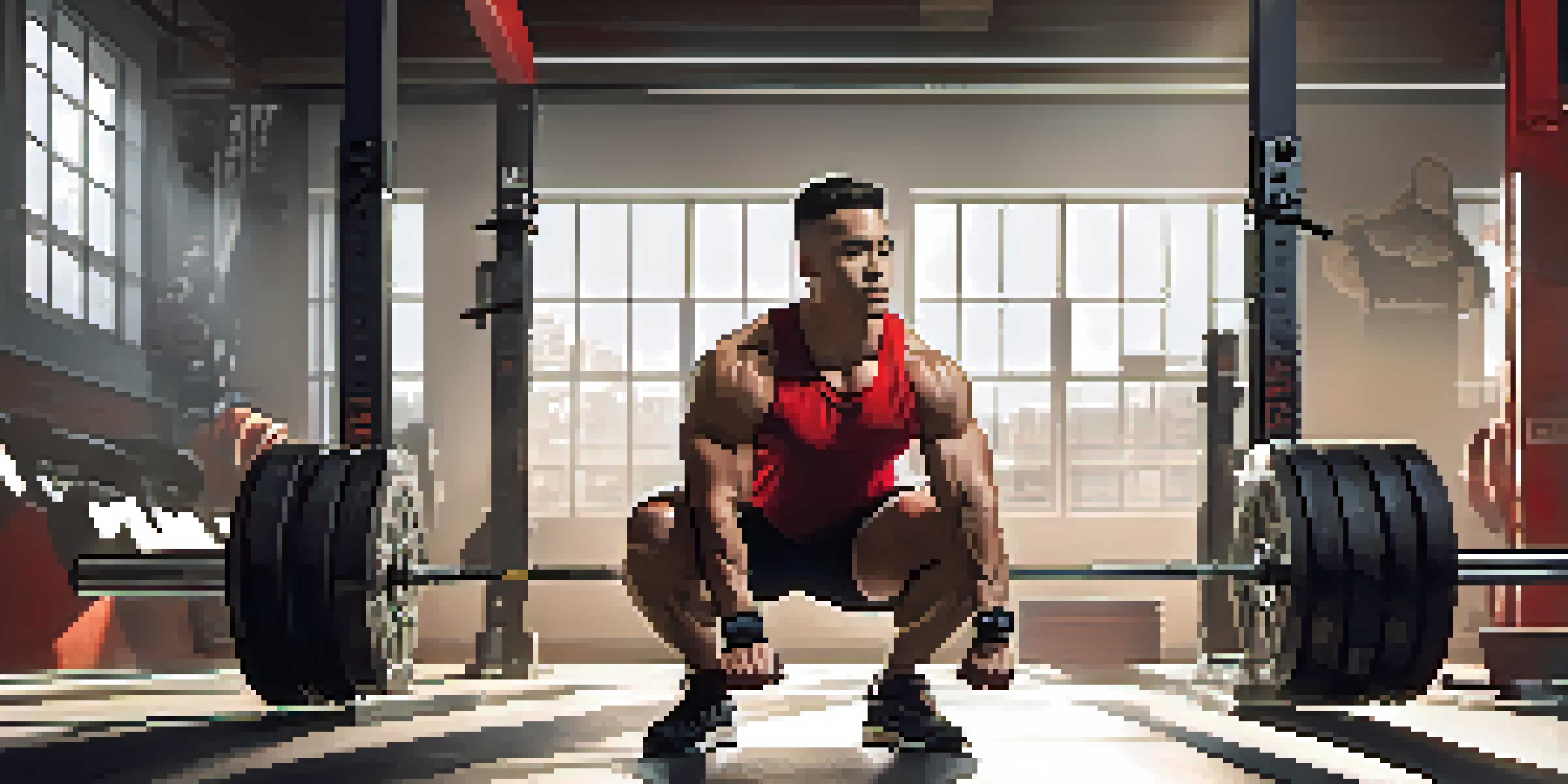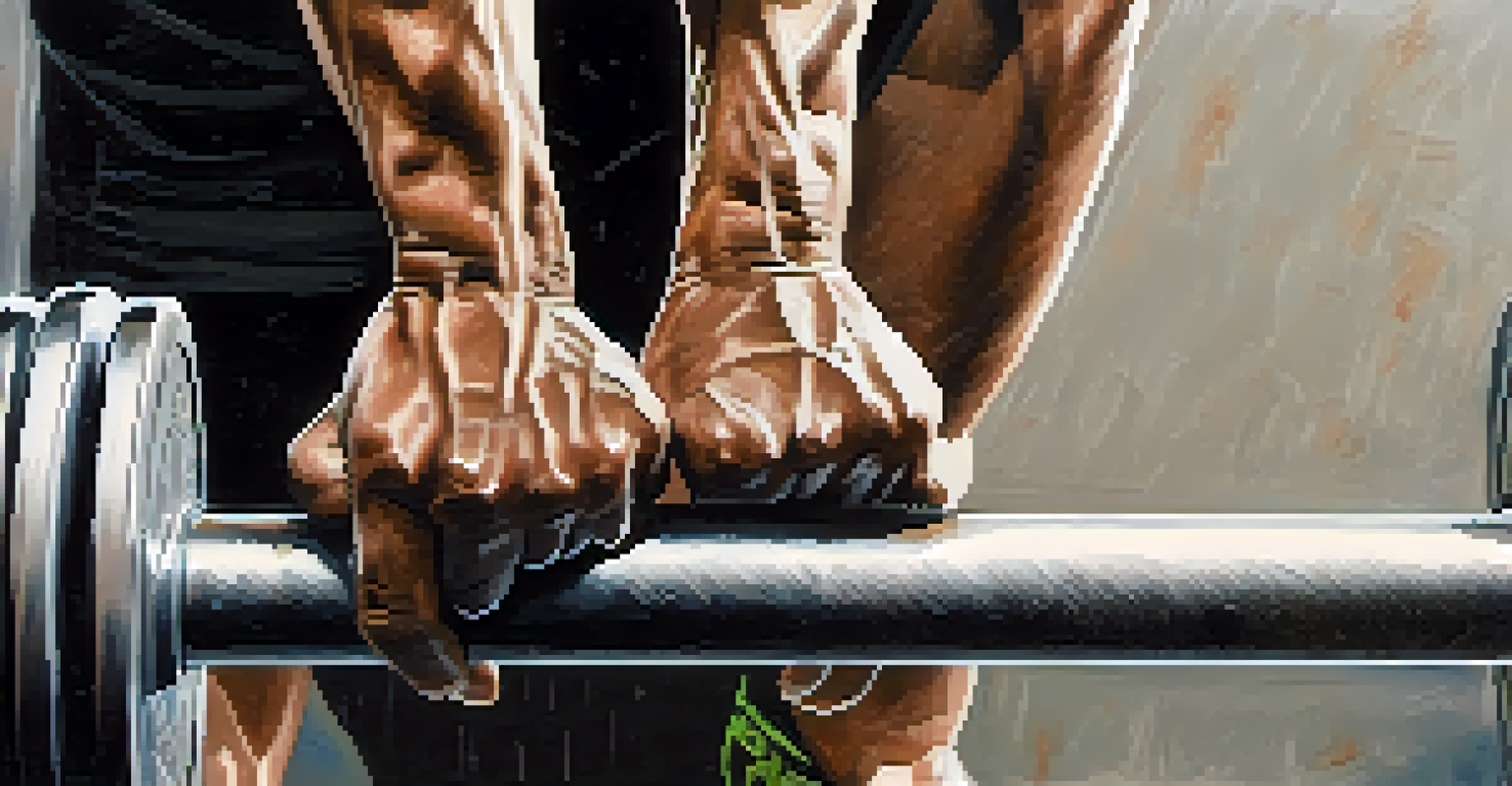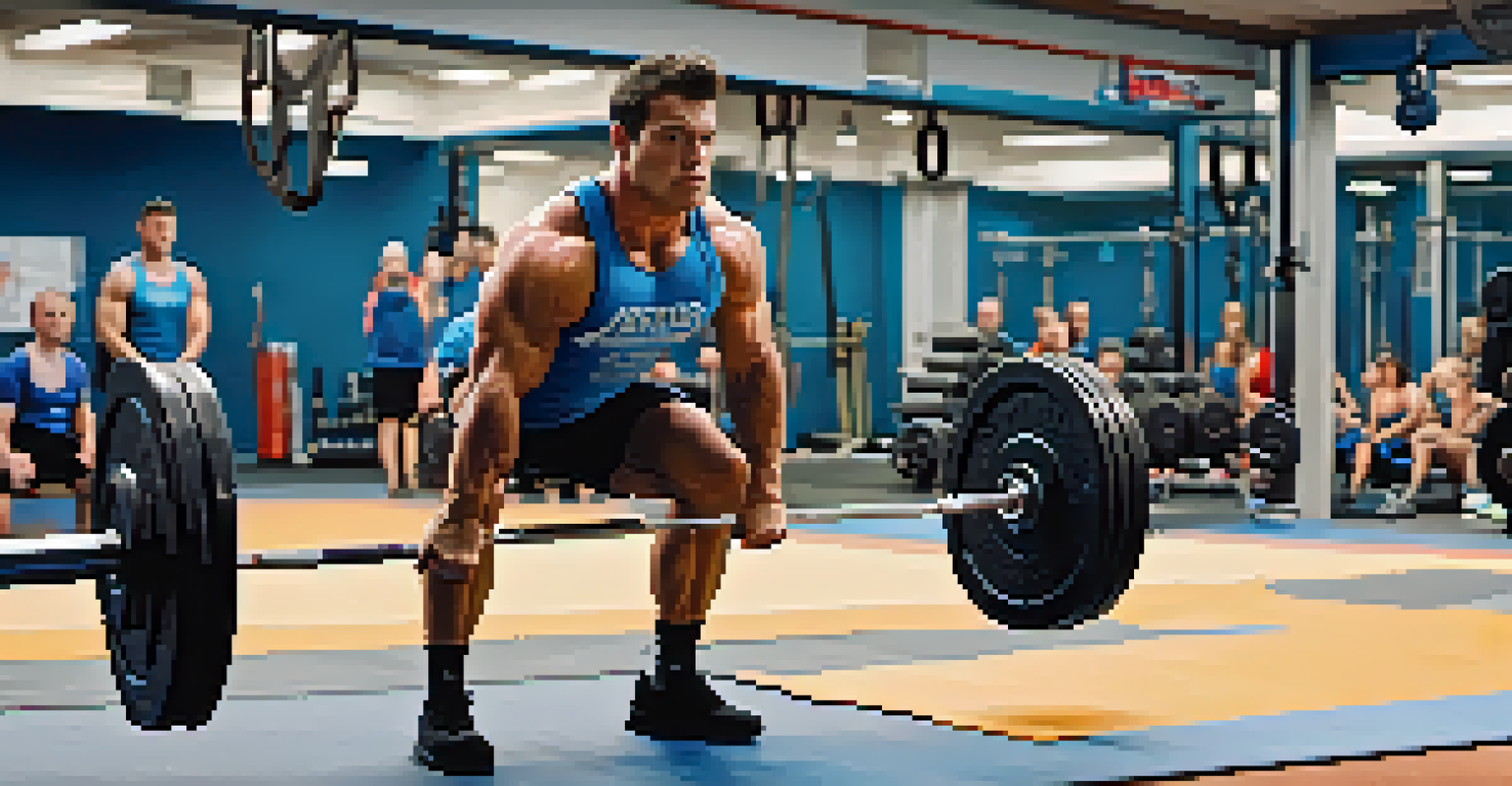Powerlifting Basics: Understanding the Core Lifts for Strength

What is Powerlifting and Its Importance
Powerlifting is a strength sport that focuses on three main lifts: the squat, bench press, and deadlift. These lifts not only test an athlete's raw strength but also their technique and mental fortitude. Unlike bodybuilding, which emphasizes aesthetics, powerlifting is all about lifting the heaviest weights possible. This sport has gained popularity due to its inclusive nature, welcoming lifters of all sizes and skill levels.
Strength does not come from physical capacity. It comes from an indomitable will.
Understanding the essence of powerlifting helps establish a solid foundation for anyone interested in strength training. The focus on these core lifts allows lifters to measure progress over time, creating a clear path to improvement. Moreover, powerlifting encourages a community spirit, with lifters often supporting one another during competitions and training sessions.
By mastering powerlifting, individuals can improve their overall strength, boost confidence, and enhance physical performance in various activities. Whether you’re an athlete looking to complement your training or a beginner seeking a new fitness challenge, powerlifting can be a rewarding journey.
The Squat: King of All Lifts
The squat is often referred to as the 'king of all lifts' because it effectively targets multiple muscle groups, including the quads, hamstrings, glutes, and core. This compound movement mimics natural movements we perform daily, making it functional and essential for overall strength. When done correctly, squats can build a solid foundation for all other lifts.

To perform a squat, stand with your feet shoulder-width apart, engage your core, and lower your body as if sitting back into a chair. Maintain a straight back and keep your knees aligned with your toes. This lift not only builds lower body strength but also enhances flexibility and balance, making it beneficial for athletes and non-athletes alike.
Powerlifting: Strength for Everyone
Powerlifting is an inclusive strength sport focusing on the squat, bench press, and deadlift, welcoming lifters of all sizes and skill levels.
Regularly incorporating squats into your routine can lead to significant strength gains and improved athletic performance. Additionally, variations like front squats or box squats can target different muscle groups and prevent workout monotony.
The Bench Press: Pressing for Power
The bench press is a staple in any powerlifting regimen, as it primarily targets the chest, shoulders, and triceps. This lift allows lifters to gauge upper body strength effectively, making it a favorite among many. The bench press can also be an excellent way to boost confidence as lifters often see rapid improvements in their numbers.
The only limit to our realization of tomorrow will be our doubts of today.
To perform a bench press, lie flat on a bench with your feet planted firmly on the ground. Grip the barbell slightly wider than shoulder-width and lower it to your chest before pushing it back up. It’s crucial to maintain proper form to prevent injury and maximize gains. Using a spotter can also enhance safety during heavier lifts.
Incorporating variations like incline or decline bench presses can diversify your training and target different areas of your chest. As you progress, you’ll find that the bench press not only builds muscle but also cultivates a sense of achievement with each weight increase.
The Deadlift: The Ultimate Full-Body Lift
The deadlift is known as the ultimate full-body lift, engaging muscle groups from head to toe. It primarily works the back, glutes, hamstrings, and core, making it essential for overall strength development. The deadlift's functional nature mirrors everyday activities, such as lifting heavy objects, which adds to its appeal in strength training.
To execute a deadlift, stand with your feet hip-width apart, grip the barbell just outside your knees, and keep your back straight as you lift. It's important to hinge at the hips rather than bending at the waist to avoid injury. This lift not only builds strength but also improves posture and core stability.
Technique is Key to Success
Mastering proper technique is essential in powerlifting, as it maximizes strength output while minimizing the risk of injury.
The versatility of the deadlift allows for various forms, including sumo and Romanian deadlifts, which target different muscle groups. By regularly practicing deadlifts, you can enhance overall strength and power, benefiting both your powerlifting journey and daily life.
The Role of Technique in Powerlifting
Technique is crucial in powerlifting, as proper form maximizes strength output and minimizes the risk of injury. Each of the core lifts requires specific body mechanics to ensure that the lifter can perform effectively and safely. Investing time in mastering technique pays off, as it can lead to better performance and more significant gains.
For instance, during the squat, maintaining a neutral spine and proper knee alignment protects against injuries and allows for heavier lifts. Similarly, in the bench press, a stable base and controlled movement are essential for lifting safely. Practicing with lighter weights initially can help establish a solid foundation before moving on to heavier loads.
Coaching or peer feedback can be invaluable for improving technique. Many lifters find that recording their lifts and analyzing their form helps pinpoint areas for improvement, leading to more effective training sessions.
Nutrition and Recovery for Powerlifters
Nutrition plays a vital role in a powerlifter's performance and recovery. Consuming a balanced diet rich in proteins, healthy fats, and carbohydrates ensures that lifters have the energy and nutrients needed for their demanding training. Proper nutrition aids in muscle recovery, helping lifters bounce back faster and perform better in subsequent workouts.
In addition to a well-rounded diet, hydration is crucial for optimal performance. Dehydration can lead to decreased strength and endurance, making it essential to drink plenty of water before, during, and after workouts. Some lifters also benefit from supplements, such as protein powders or creatine, to support their training goals.
Nutrition Fuels Performance
A balanced diet and proper hydration are crucial for powerlifters, aiding in energy, muscle recovery, and overall performance.
Equally important is recovery, which includes both rest and active recovery days. Incorporating rest days into your routine allows muscles to repair and grow stronger, while light activities like stretching or foam rolling can prevent stiffness and enhance flexibility. Together, proper nutrition and recovery strategies create a sustainable approach to strength training.
Setting Goals and Tracking Progress
Setting clear, achievable goals is a fundamental aspect of any successful powerlifting journey. Whether your aim is to increase your squat by a specific weight or compete in a local meet, defining your objectives helps maintain motivation and direction. Break your goals into smaller, manageable milestones to track progress effectively.
Tracking your lifts and progress is equally essential, as it provides insight into your strengths and areas that need improvement. Keeping a training journal or using apps can help you monitor your performance over time. This not only makes it easier to celebrate small victories but also helps identify patterns and adjust your training accordingly.

Don’t forget to celebrate your achievements, no matter how small. Acknowledging progress boosts motivation and reinforces the positive journey you’re on in the world of powerlifting.